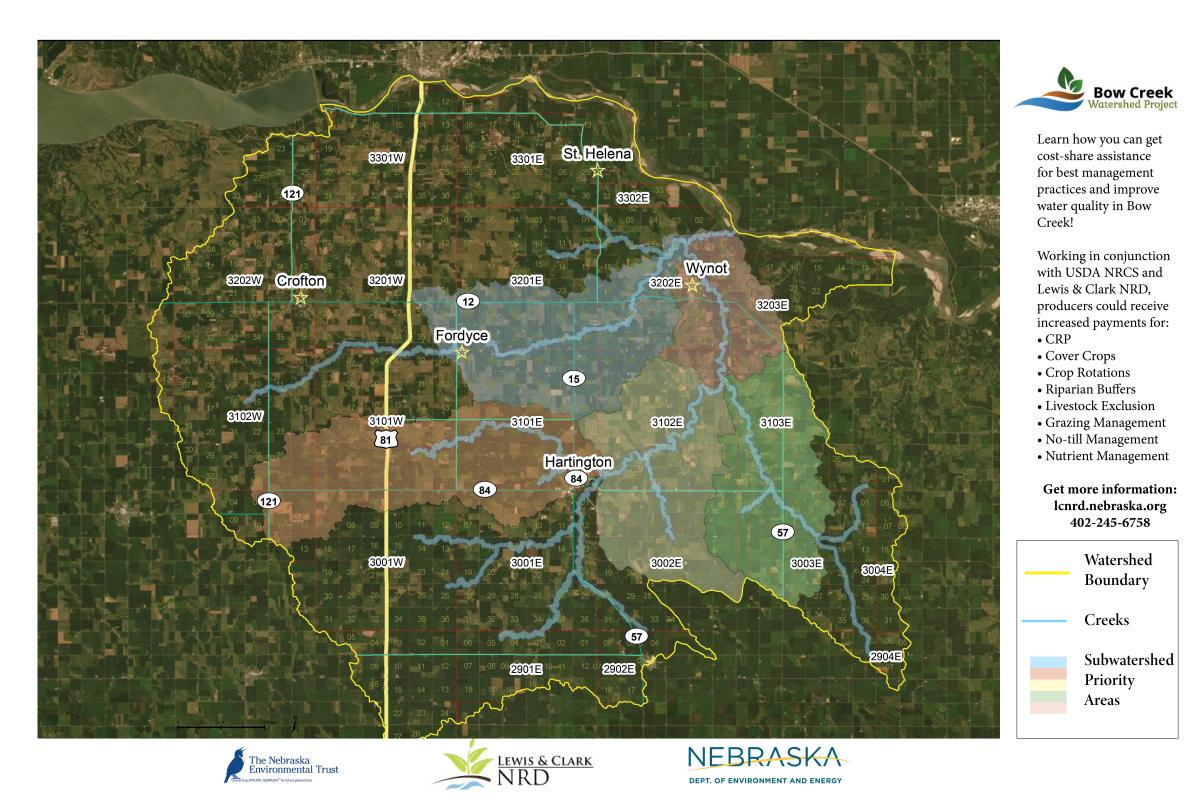Bow Creek
2025 Events
Northeast Nebraska Ag Conference
featuring John Kempf
December 16, 2025
Lifelong Learning Center, Norfolk, NE
John Kempf will discuss advances in nitrogen management, how the newly discovered rhizophagy cycle is redefining nutrient cycling, and what that means for the family farm operation. Over a dozen breakout sessions to choose from ranging from theory to practical application on cover crops, grazing perennials and cropland, economics and soil health systems. The Making It Work Here Panel features four local producers who are implementing these ideas on the farm. Listen to unique perspectives and honest assessments of the system. A great opportunity to meet fellow producers looking to increase profits on the farm! Last year sold out so register early!
Early bird registration only $20! Register Now!
For more information on events contact Becky Ravenkamp, Lewis & Clark NRD Bow Creek Watershed Coordinator at bravenkamp@lcnrd.org or by calling 402-254-6758.

The Bow Creek Watershed contains 392,574 acres in portions of Cedar, Dixon, and Knox Counties. A rich history extends back to before the days of Lewis and Clark. Clark’s journal entry on August 26, 1804 mentions Bow Creek, writing, “above the mouth of this creek a Chief of the Maha Nation displeased with the conduct of Black Bird, the main cheif, came to this place and built a town which was called by his name Petite Arc (or Little Bow)...we gathered great quantities of grapes and three types of plumbs, one yellow round, one ovel and one the common wild plumb.”
In 2019, the Lewis & Clark NRD updated their Water Quality Assessment Plan and added Bow Creek as a priority area based on Nebraska Department of Environment and Energy Basin Rotation water quality testing. The 2016 Basin Rotation water quality testing showed elevated levels of sediment, phosphorus, nitrates and E. coli in Bow Creek. Working with FYRA Engineering, models were created to show the potential to decrease nonpoint source pollutants in Bow Creek by increasing the adoption of best management practices (BMPs) in priority Bow Creek sub-watersheds.
Those best management practices include, but are not limited to:
- Nutrient Management
- Cover Crop
- No-till Management
- Land Use Change: CRP or Riparian Buffer Strips
- Grazing Management Plans
- Livestock Exclusion Plans with Alternative Water Sources and Fencing
- Septic System Upgrades
Through grants from the Nebraska Environmental Trust and Nebraska Department of Environment and Energy, these BMPs are eligible for additional practice implementation and education payments through the Bow Creek Watershed Project. Practices must be part of approved conservation contracts to be eligible. Details for implementation of BMPs will be planned with NRCS technical assistance and Bow Creek programs will then be applied for through the LCNRD office. For more information contact:
Bow Creek Watershed Coordinator
Becky Ravenkamp
Lewis & Clark NRD Office
608 N Robinson Ave., Hartington, NE 68739
Phone: 402-254-6758.


